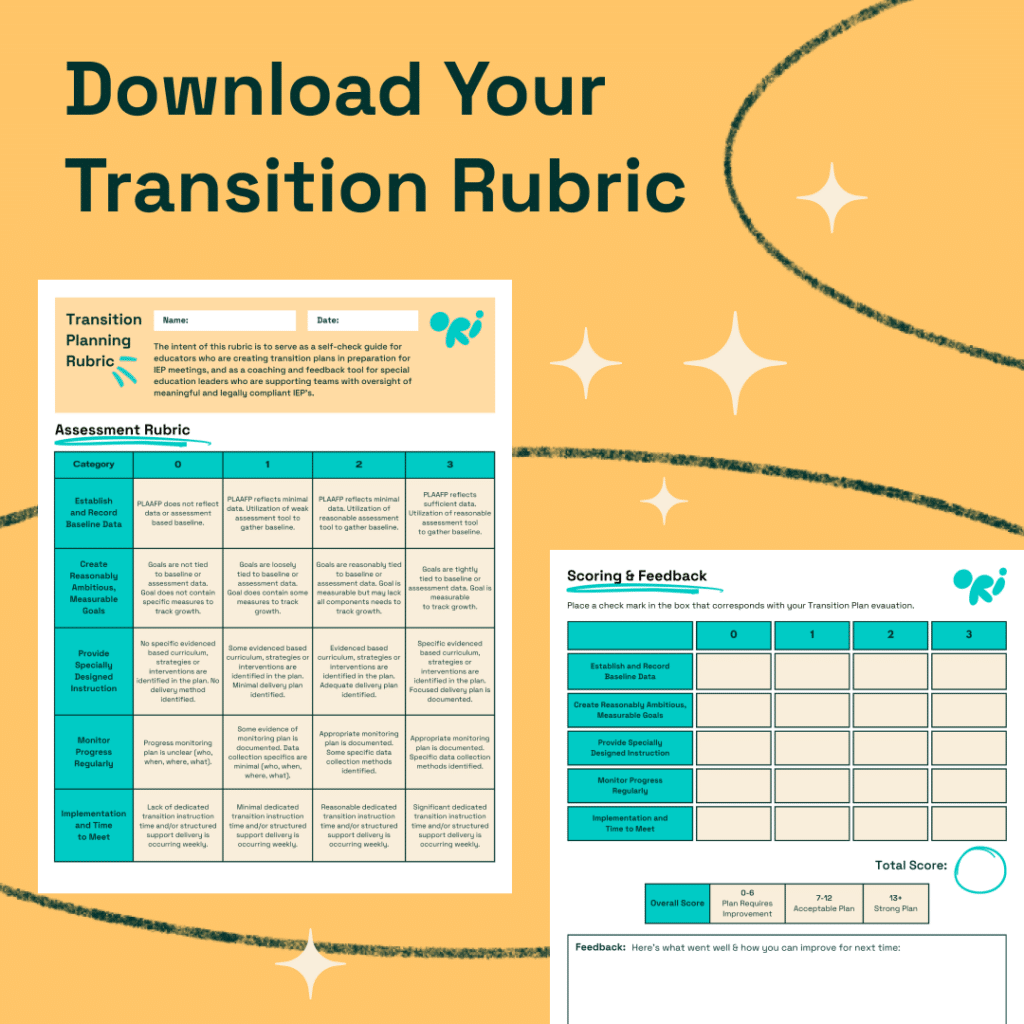


Effective money management is crucial for the independence of students with disabilities. This guide delves into creating detailed Individualized Education Program (IEP) goals that focus on financial skills, aimed at helping students navigate the world of money with confidence and competence.
Functional money skills are essential for students with disabilities to achieve independence, make informed financial decisions, and participate fully in society. IEP goals targeting these skills equip students with the necessary tools to manage everyday financial tasks effectively.
Disclaimer: The following are sample goals meant to illustrate how functional money IEP goals might be structured. However, it’s important to remember that each student’s IEP goals should be uniquely tailored to their individual circumstances, needs, and strengths.
Our Transition Planning Rubric is designed to support district leaders and educators in guiding their teams towards excellence in transition planning.
It provides comprehensive criteria that cover the breadth of transition planning, from gauging student engagement to evaluating post-secondary goals and services.
Expand your team’s capabilities and improve the success of IEP meetings.

By meticulously crafting and implementing functional money IEP goals, educators can significantly contribute to the financial literacy and independence of students with disabilities. These goals not only prepare students for practical financial situations but also foster confidence and self-reliance in managing their personal finances.
Prepare your students for lifelong success with Ori’s Transition Curriculum.